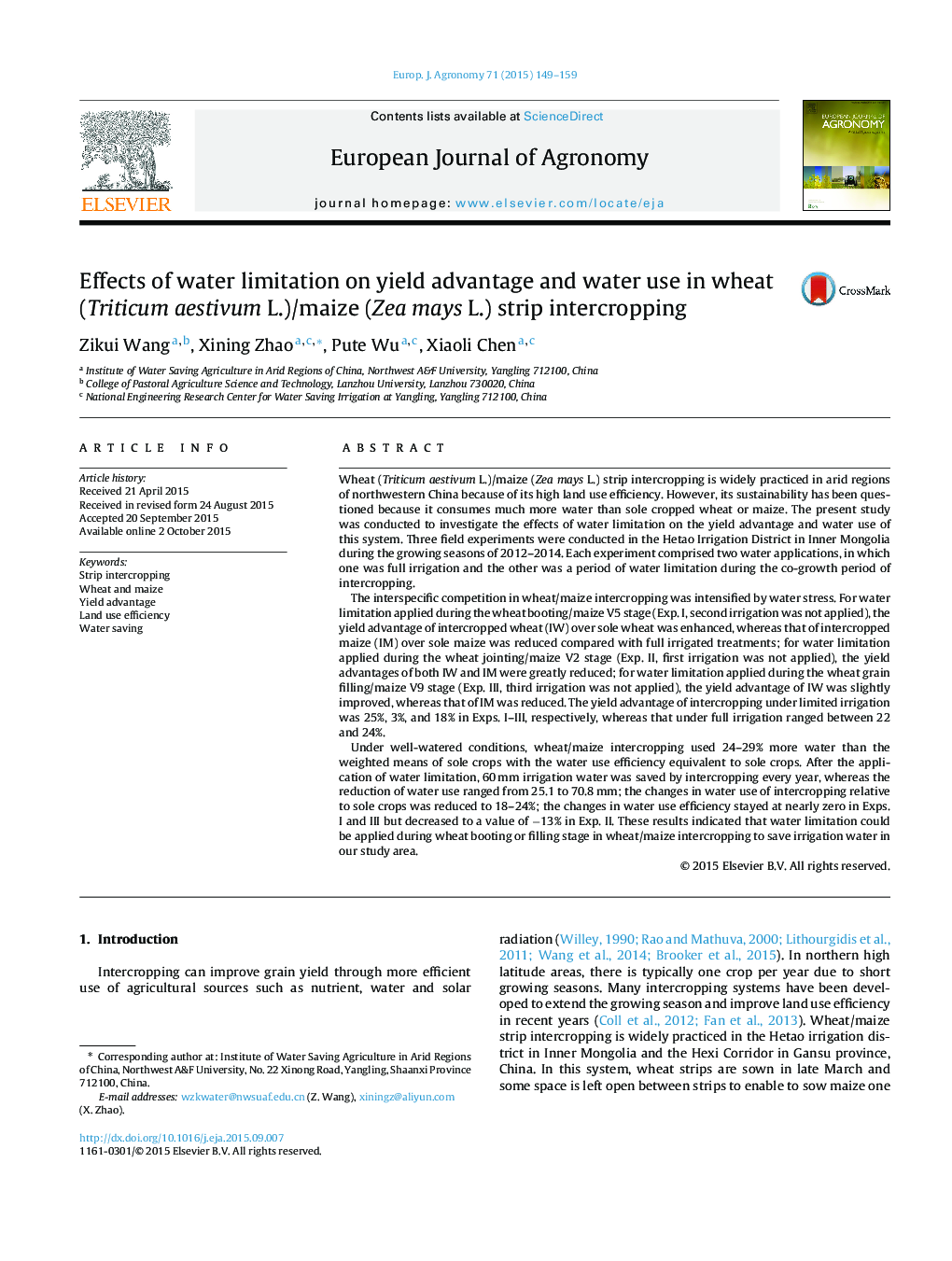| کد مقاله | کد نشریه | سال انتشار | مقاله انگلیسی | نسخه تمام متن |
|---|---|---|---|---|
| 4508756 | 1624454 | 2015 | 11 صفحه PDF | دانلود رایگان |

• Wheat/maize intercropping consumes more water than weighted means of sole crops.
• Water use efficiency of intercropping is equivalent to weighted means of sole crops.
• Water stress could aggravate interspecific competition in intercropping.
• Proper water limitation could enhance complementary use of water in intercropping.
Wheat (Triticum aestivum L.)/maize (Zea mays L.) strip intercropping is widely practiced in arid regions of northwestern China because of its high land use efficiency. However, its sustainability has been questioned because it consumes much more water than sole cropped wheat or maize. The present study was conducted to investigate the effects of water limitation on the yield advantage and water use of this system. Three field experiments were conducted in the Hetao Irrigation District in Inner Mongolia during the growing seasons of 2012–2014. Each experiment comprised two water applications, in which one was full irrigation and the other was a period of water limitation during the co-growth period of intercropping.The interspecific competition in wheat/maize intercropping was intensified by water stress. For water limitation applied during the wheat booting/maize V5 stage (Exp. I, second irrigation was not applied), the yield advantage of intercropped wheat (IW) over sole wheat was enhanced, whereas that of intercropped maize (IM) over sole maize was reduced compared with full irrigated treatments; for water limitation applied during the wheat jointing/maize V2 stage (Exp. II, first irrigation was not applied), the yield advantages of both IW and IM were greatly reduced; for water limitation applied during the wheat grain filling/maize V9 stage (Exp. III, third irrigation was not applied), the yield advantage of IW was slightly improved, whereas that of IM was reduced. The yield advantage of intercropping under limited irrigation was 25%, 3%, and 18% in Exps. I–III, respectively, whereas that under full irrigation ranged between 22 and 24%.Under well-watered conditions, wheat/maize intercropping used 24–29% more water than the weighted means of sole crops with the water use efficiency equivalent to sole crops. After the application of water limitation, 60 mm irrigation water was saved by intercropping every year, whereas the reduction of water use ranged from 25.1 to 70.8 mm; the changes in water use of intercropping relative to sole crops was reduced to 18–24%; the changes in water use efficiency stayed at nearly zero in Exps. I and III but decreased to a value of −13% in Exp. II. These results indicated that water limitation could be applied during wheat booting or filling stage in wheat/maize intercropping to save irrigation water in our study area.
Journal: European Journal of Agronomy - Volume 71, November 2015, Pages 149–159